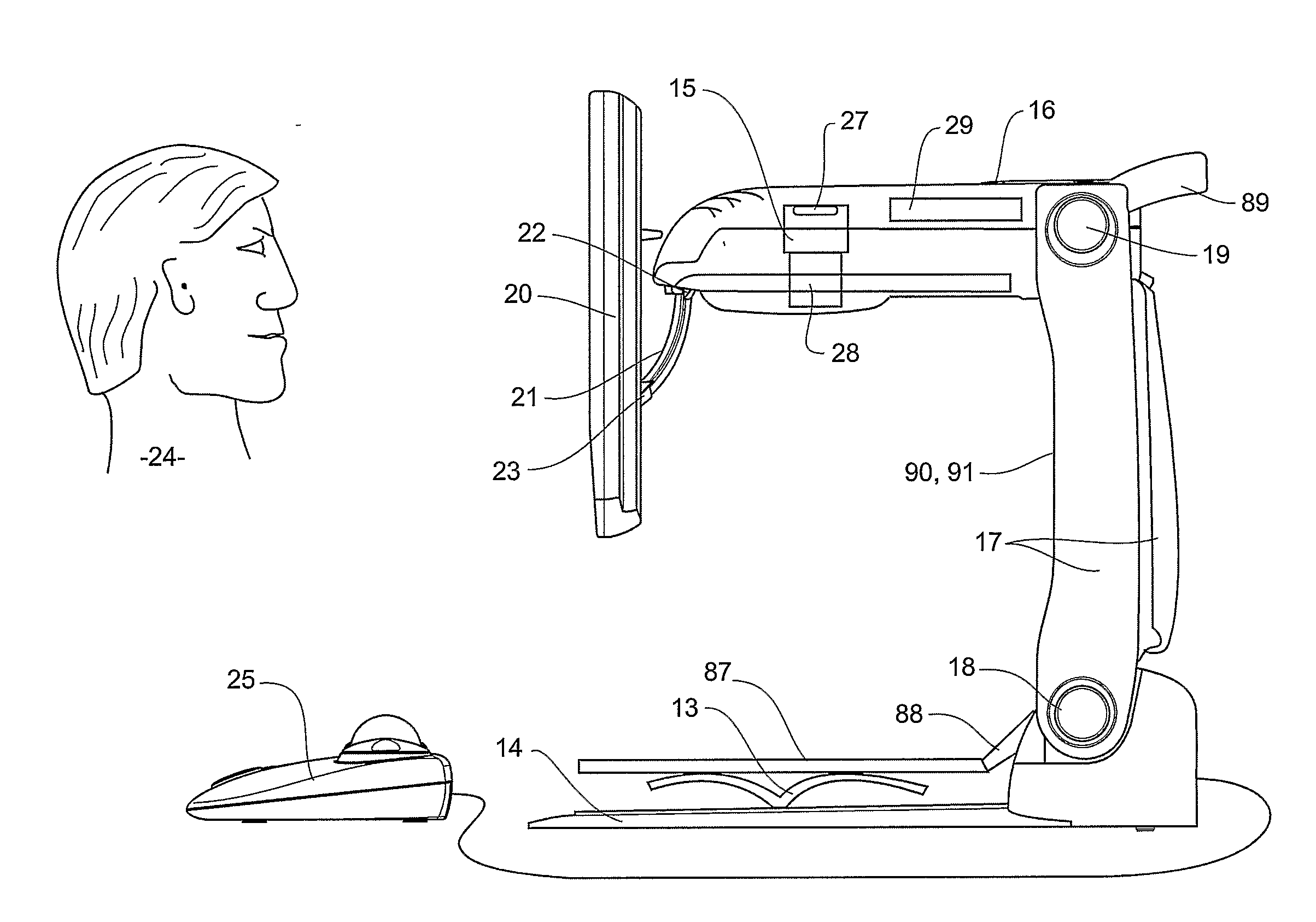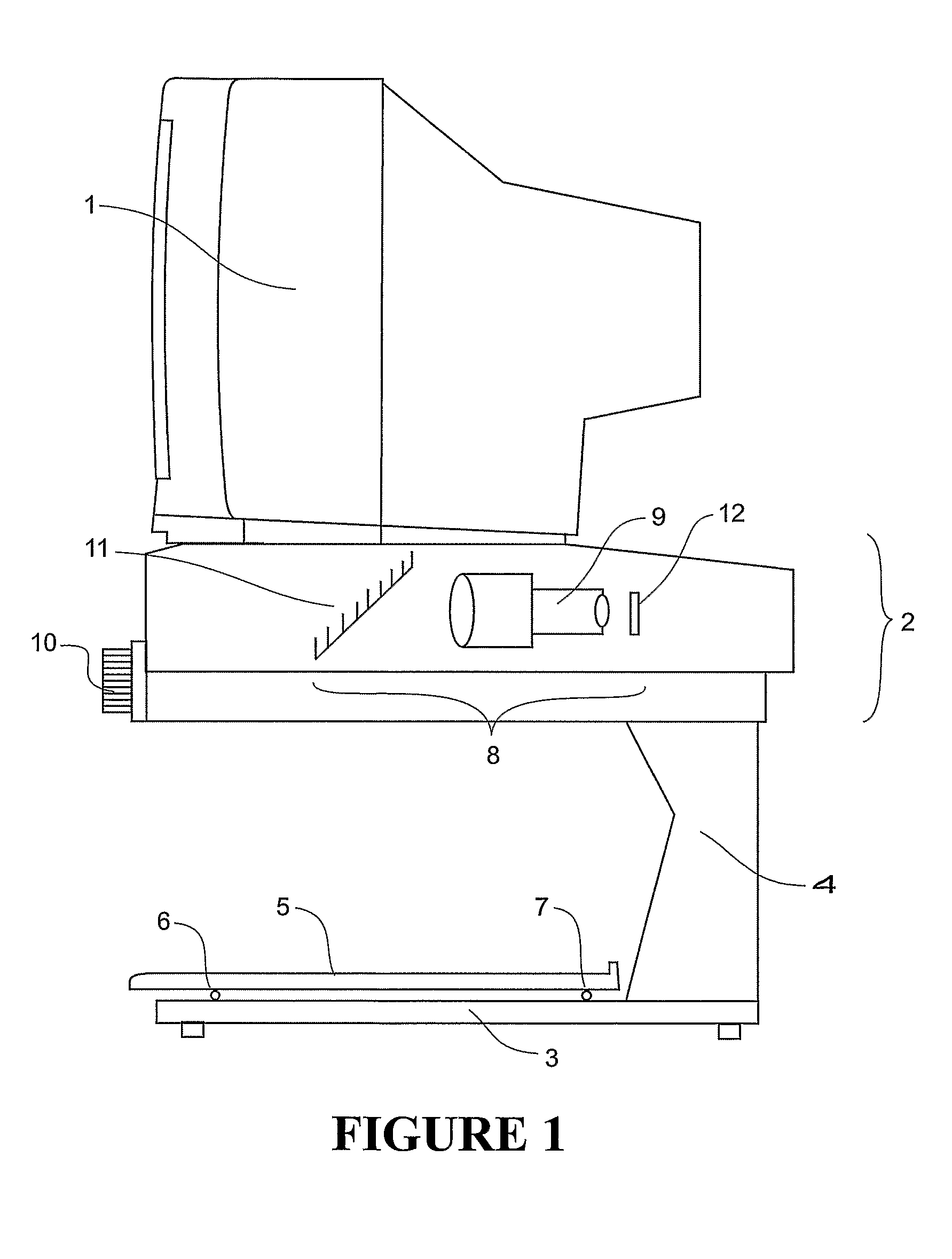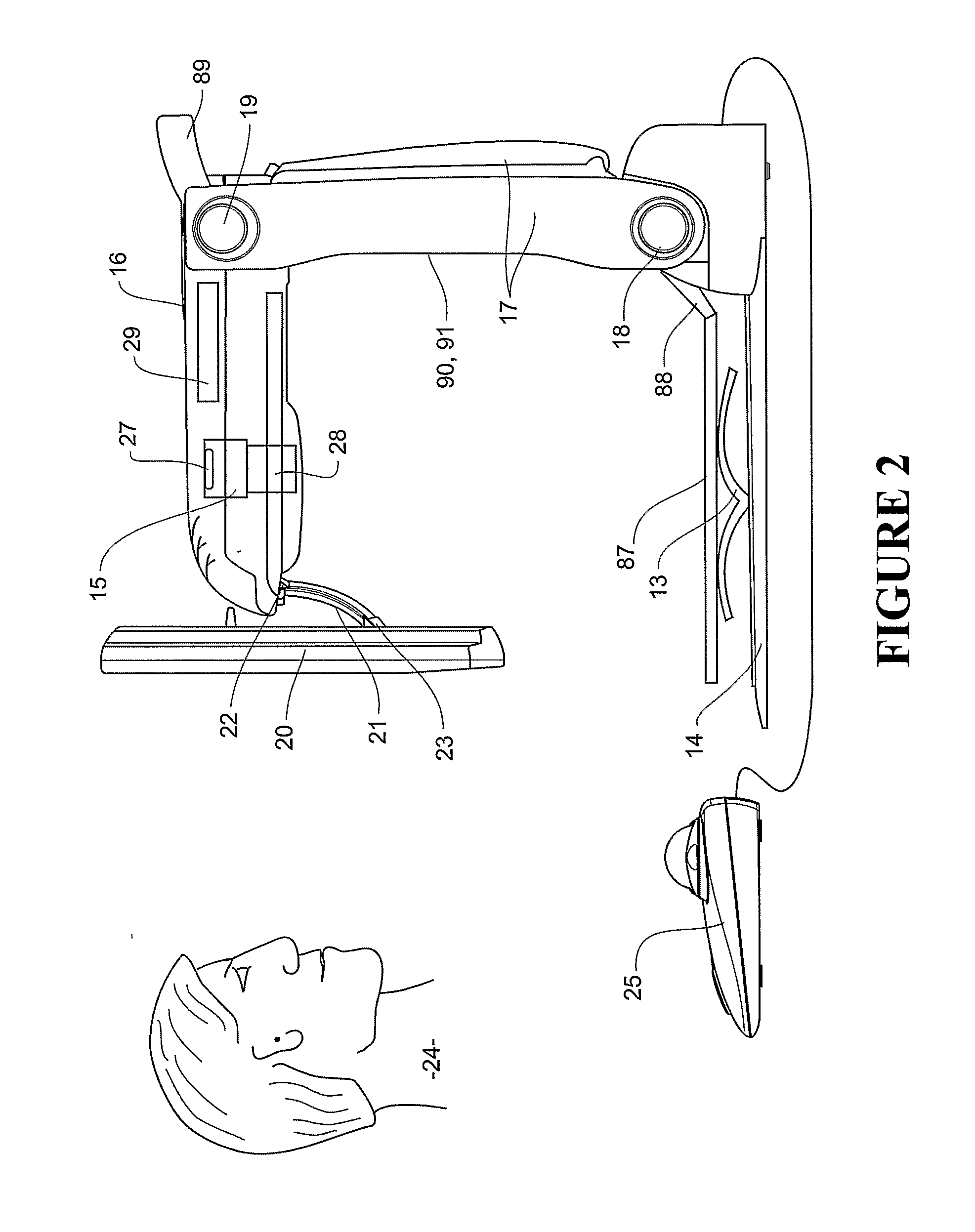Image magnifier for the visually impaired
a magnifier and visual impairment technology, applied in the field of viewing devices, can solve the problems of limiting the ability of individuals with low vision to lead an independent life, difficulty in reading small writing or discerning small objects without high magnification, etc., and achieves the effects of reducing the size of the magnifier, facilitating transportation, and not being able to fold
- Summary
- Abstract
- Description
- Claims
- Application Information
AI Technical Summary
Benefits of technology
Problems solved by technology
Method used
Image
Examples
Embodiment Construction
[0102]The image magnifier for the vision impaired of the present invention magnifies the image of face-up source material placed in the visual field of the camera and displays the magnified image on a VDU or other display means. Preferably there are two different camera modes. The first mode is a static mode whereby the camera captures and stores a single high-resolution image of the source material. This high-resolution image can be manipulated and displayed on the display means. The second mode is a live mode whereby the camera captures consecutive lower resolution images at a high frame rate so as to provide full motion video. Using the live mode the low-vision user can move the view around the source material and magnify a desired section of interest. Preferably the same camera and the same apparatus are used for both the static and live modes.
[0103]In static mode the software controlling the system captures and manipulates a high-resolution image. This allows precise pixel data...
PUM
 Login to View More
Login to View More Abstract
Description
Claims
Application Information
 Login to View More
Login to View More - R&D
- Intellectual Property
- Life Sciences
- Materials
- Tech Scout
- Unparalleled Data Quality
- Higher Quality Content
- 60% Fewer Hallucinations
Browse by: Latest US Patents, China's latest patents, Technical Efficacy Thesaurus, Application Domain, Technology Topic, Popular Technical Reports.
© 2025 PatSnap. All rights reserved.Legal|Privacy policy|Modern Slavery Act Transparency Statement|Sitemap|About US| Contact US: help@patsnap.com



